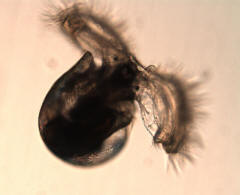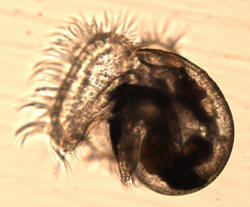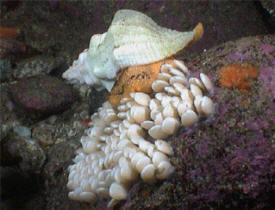



My research revolved around exploring factors influencing the natural element ‘signatures’ found in the calcified parts of marine organisms for larval tracking studies. My model organism was Kelletia kelletii, a common subtidal marine snail that ranges from Monterrey California, USA to Baja California, Mexico. These snails have a two-part life cycle; carnivorous benthic adults that lay egg capsules, and the planktonic larvae that first develop into trochophores and later become veliger larvae. Laboratory observations indicate that the statoliths and shell begin to form in the late trochophore stage.
I investigated how egg source, temperature, seawater metal concentration, and yolk metal content affected the element signatures in the statoliths of larvae that are about to hatch. Follow the 'Publications' link to the left for a pdf file of my manuscript in press.
Currently, I am working as an environmental consultant at Glenn Lucos Associates.
Effects of egg source, temperature, and seawater chemistry on statolith element Incorporation in Kelletia kelletii larvae





